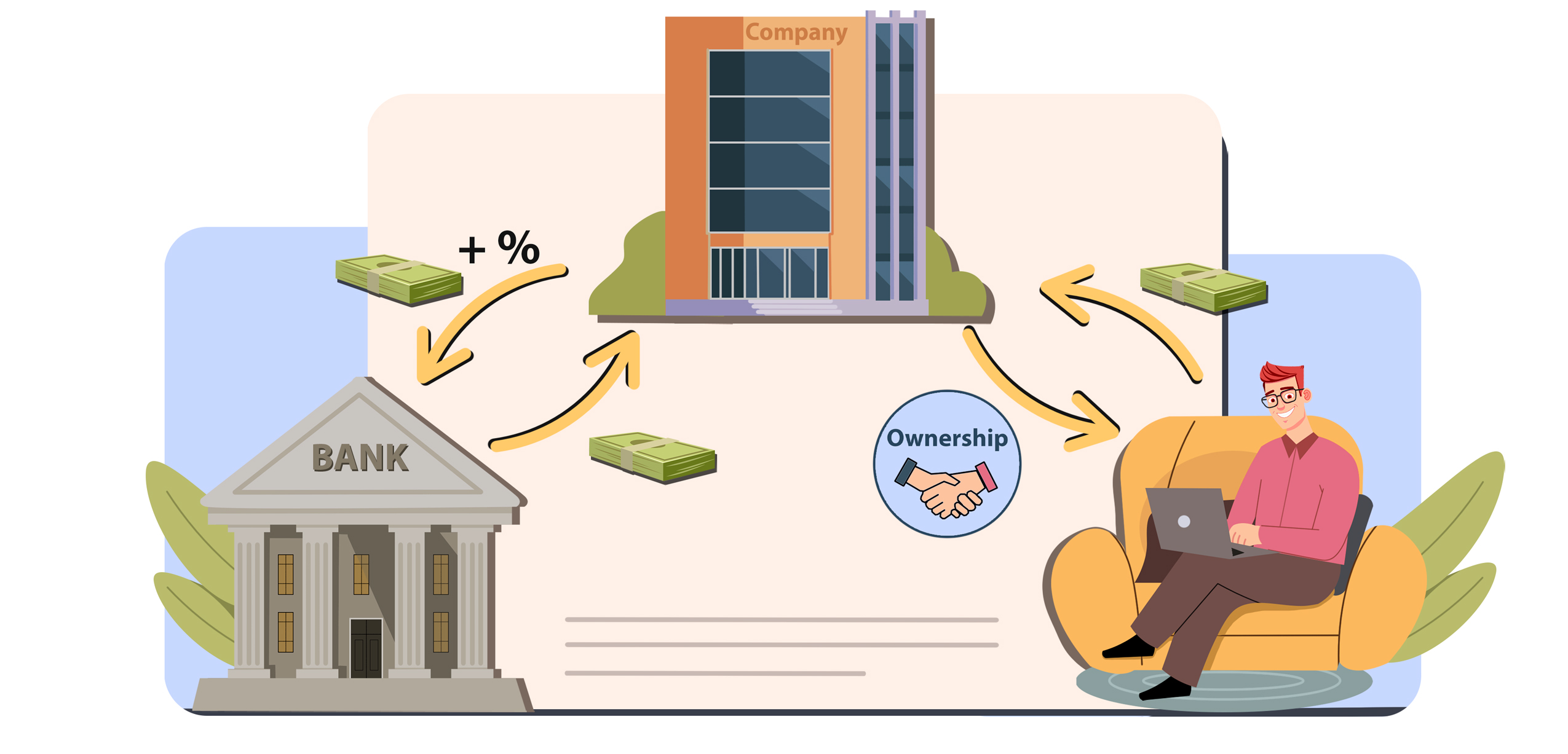
Every company needs money to start and grow. This money is called capital. How a company gets this money is important, and it's called the capital structure. The capital structure is a combination of two ways to get money: borrowing and selling ownership.
Borrowing means the company takes money from banks or other sources and promises to pay it back with interest over time. Selling ownership means the company gives partial ownership to investors in exchange for their money.
The capital structure affects several things. First, it affects the risk and returns for investors. Risk is the uncertainty of getting their money back, while the return is the profit they can make. A company with more debt in its capital structure may be riskier because it has to make regular payments and repay the borrowed money. On the other hand, if investors own a part of the company, they share the risk and only get a return if the company does well.
Second, the capital structure affects the cost of capital. This is the rate of return the company needs to satisfy its investors. The cost of capital depends on the cost of borrowing and the return expected by investors. The balance between debt and ownership determines the cost of capital.
Lastly, the capital structure also affects the company's ability to get more money in the future. If a company has too much debt, investors may be hesitant to give more money because they see it as a burden. But if a company has a good mix of debt and ownership, it may be seen as less risky and more attractive to investors. This makes it easier to get more money when needed.
The optimal mix is determined by the trade-off between the costs and benefits of debt and equity financing, and it is not a one-size-fits-all solution. It depends on the company’s industry, size, and growth prospects as well as the overall economic environment. For example, a small company with uneven revenues may not afford to finance its operations with debt as this will require regular interest payments. In this case, equity financing would be a better option. On the other hand, a mature company with predictable cash flows may opt to finance its operations primarily with debt as it can afford to make fixed-interest payments.
The optimal mix of debt and equity also depends on the level of interest rates and the overall economy. During periods of high-interest rates, even large companies may opt for a higher proportion of equity financing as debt financing is expensive. Similarly, when equity valuations are elevated, companies tend to prefer equity financing as they can raise funds at favorable terms without significantly diluting existing shareholders.
Typically, the best combination of equity and debt financing depends on the unique characteristics of each company. Equity financing is costlier compared to debt financing because it involves sharing profits with investors. However, early-stage companies may find it challenging to manage significant levels of debt. On the contrary, established companies can consider a higher proportion of debt financing when interest rates are low. This allows them to take advantage of the affordable cost of capital while reducing the dilution of ownership for shareholders associated with equity financing.
When people want to invest their money, they have to think about the risks and the rewards. Risk means there's a chance they might lose their money, and reward means the profit or benefit they can get. Generally, the higher the risk, the higher the reward they expect.
Now, when companies need money, they can get it in two ways: borrowing or selling part of the company. Borrowing means they take a loan and have to pay it back later with extra money called interest. Selling part of the company means they give ownership to other people in exchange for money.
The way companies get their money, either by borrowing or selling ownership, affects how risky it is for people who invest in the company. For example, if a company has a lot of debt from borrowing, it can be risky because it might not be able to pay back the loans. On the other hand, if people own part of the company, they share the risk and only make money if the company does well.
Companies have to decide how much borrowing and selling ownership they want to do, based on how risky they want it to be. Some companies don't like borrowing because they have to make regular payments to pay back the loans. Instead, they prefer selling ownership, even though it might be more expensive. People who own part of the company don't get regular payments, but they expect a higher reward because they become part owners.
Companies have to find the right balance between borrowing and selling ownership to meet their needs and how much risk they can handle. It's like finding the right mix of ingredients for a recipe - they have to consider the good and bad parts of each choice.
The way companies get their money, either by borrowing or selling ownership, affects how risky it is for people who invest in the company. For example, if a company has a lot of debt from borrowing, it can be risky because it might not be able to pay back the loans. On the other hand, if people own part of the company, they share the risk and only make money if the company does well.
Companies have to decide how much borrowing and selling ownership they want to do, based on how risky they want it to be. Some companies don't like borrowing because they have to make regular payments to pay back the loans. Instead, they prefer selling ownership, even though it might be more expensive. People who own part of the company don't get regular payments, but they expect a higher reward because they become part owners.
Companies have to find the right balance between borrowing and selling ownership to meet their needs and how much risk they can handle. It's like finding the right mix of ingredients for a recipe - they have to consider the good and bad parts of each choice.
WACC can be calculated with the following formula:
WACC = (E / V x Re) + (D/V x Rd x (1 – Tc))
Where:
E = Market value of the company’s equity
D = Market value of the company’s debt
V = E + D
Re = Cost of equity
Rd = Cost of debt
Tc = Corporate tax rate
If a company has a high proportion of debt in its capital structure it may have a low cost of capital because of the tax shield effect. This is because interest payments are tax-deductible, meaning that a debt-heavy capital structure may help a company reduce its tax obligations. However, very high levels of debt increase a company’s debt obligations making its capital structure more expensive. This is because of the bankruptcy cost effect, according to which, the risk of bankruptcy increases significantly when a company has high levels of debt. This can lead to a high cost of capital and reduce the company’s profitability.
In contrast, if a corporation relies predominantly on stock to fund its operations, the tax shield effect may raise the cost of capital. Due to the high-interest payments during periods of high-interest rates, a debt-heavy capital structure might result in a reduced cost of capital. However, if the level of debt is too high, the cost of capital will rise dramatically as the chance of bankruptcy rises.
Capital structure analysis is very important for investors as it allows them to assess a company’s risk and determine its required level of return. An optimal financing mix includes both equity and debt financing as both financing options have their benefits and drawbacks. A debt-heavy capital structure is typically a better option for mature companies that have predictable cash flows and can pay regular interest payments. Also, mature companies can receive loans at lower interest rates than smaller firms thanks to their financial stability. This means they can enjoy the benefits of the tax shield effect without facing a significant bankruptcy risk. On the other hand, it is safer for small, early-stage companies to have an equity-heavy capital structure as high levels of risk at a company’s early stages significantly increase the risk of bankruptcy. Ultimately, the optimal mix of equity and debt financing depends on a company’s unique characteristics, such as growth phase, industry, size, and financial situation. WACC can help investors measure a company’s cost of capital allowing them to determine their required rate of return.
You will receive the information that help to do investments.
Note: Check the spam folder if you don't receive an email.
